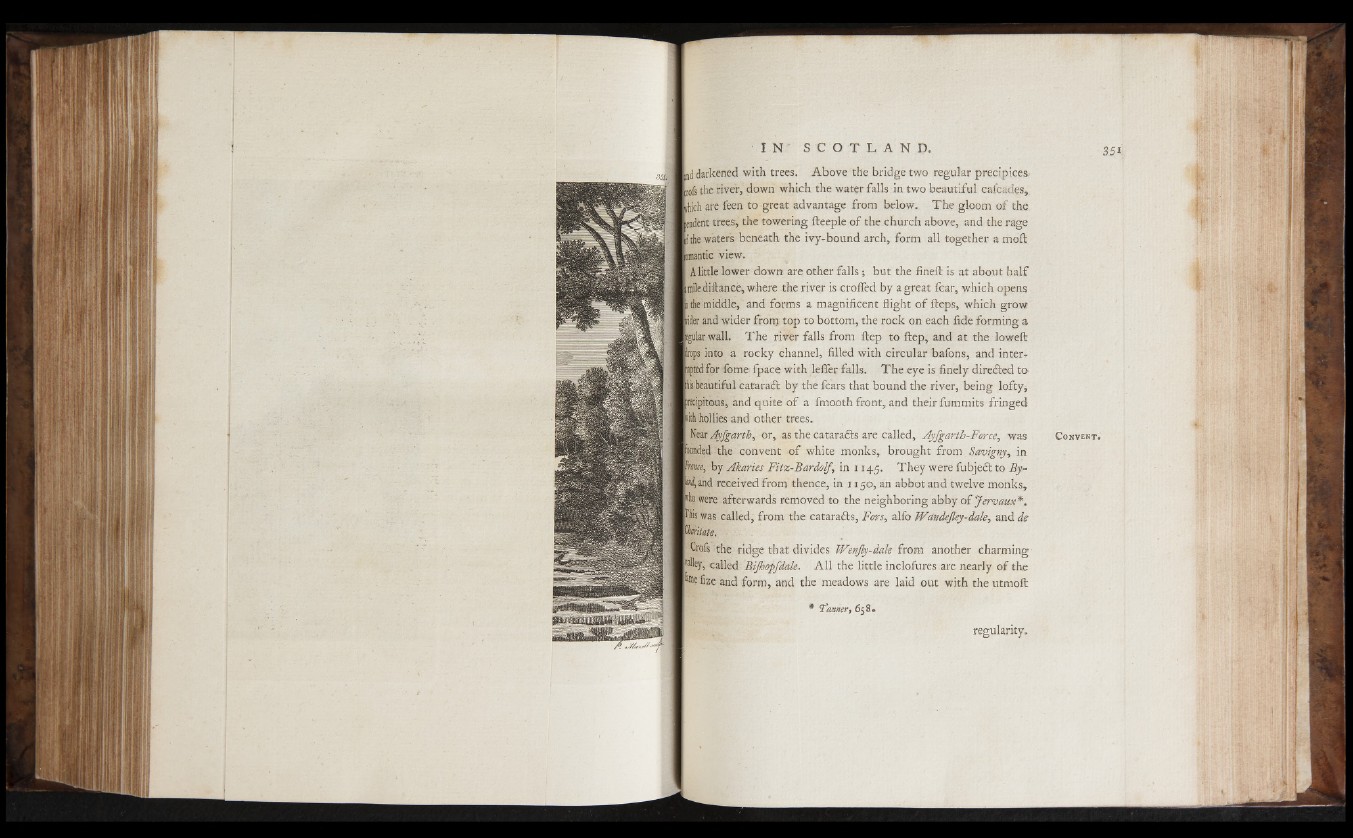
¡nd darkened with trees. Above the bridge two regular precipices,
irofs the river, down which the water falls in two beautiful cafcades,
Hiich are feen to great advantage from below. The gloom of the
Udent trees, the towering fteeple of the church above, and the rage
f the waters beneath the ivy-bound arch, form all together a moil:
bmantic view.
A little lower down are other falls ; but the fineft is at about half
[mile diftance, where the river is crofied by a great fear, which opens
[the middle, and forms a magnificent flight of fteps, which grow
rider and wider from top to bottom, the rock on each fide forming a
bular wall. The river falls from ftep to ftep, and at the loweft
bps into a rocky channel, filled with circular bafons, and inter*
hpted for fome ipace with lefler falls. The eye is finely dire&ed to
lis beautiful cataraft by the fears that bound the river, being lofty,
pitcipitous, and quite of a fmooth front, and their fummits fringed
pith ¡hollies and other trees.
Near Ayfgarth, or, as the catarafts are called, Ayfgarth-Force, was
Bunded the convent of white monks, brought from Savigny, in
mw, by Akaries Fitz-Barcblf, in 1 14.5. They were fubject to By~
Rand received from thence, in 1150, an abbot and twelve monks,
po were afterwards removed to the neighboring abby of Jervaux*.
phis was called, from the catarafts, Fors, alfo Wandejley-dale, and de
tyvitate.
Crofs the ridge that divides Wenfly-dale from another charming
m i called Bijbopfdale. All the little inclofures are nearly of the
fee foe and form, and the meadows are laid out with the utmoft
C o n v en t .
* Tanner, 638«
regularity.